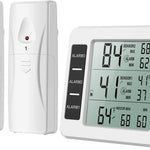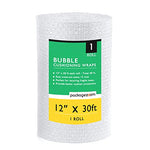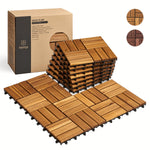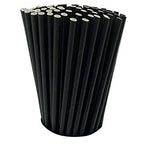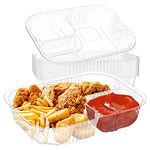You have no items in your shopping cart.
When it comes to protecting your home from termites, a termite sprayer is an essential tool in your arsenal. Termites can cause extensive damage to your property, and early detection and prevention are crucial. In this comprehensive guide, we will delve into the world of termite sprayers, exploring their importance, how they work, and the best practices for using them effectively. Whether you're a homeowner or a professional pest control expert, this article will equip you with the knowledge and expertise to combat termites and safeguard your home.
Table of Contents
- What Is a Termite Sprayer?
- Why Do You Need a Termite Sprayer?
- How Do Termite Sprayers Work?
- Types of Termite Sprayers
- Key Features to Look for in a Termite Sprayer
- How to Choose the Right Termite Sprayer for Your Needs
- The Benefits of Using a Termite Sprayer
- Tips for Effective Termite Spraying
- Common Mistakes to Avoid When Using a Termite Sprayer
- How Often Should You Use a Termite Sprayer?
- Signs of Termite Infestation
- How to Prepare Your Home for Termite Spraying
- Step-by-Step Guide: Using a Termite Sprayer
- DIY Termite Spraying vs. Professional Pest Control Services
- Safety Precautions When Using a Termite Sprayer
- Environmental Impact of Termite Spraying
- FAQs about Termite Sprayers
- Can I use a termite sprayer indoors?
- How long does it take for termite sprayers to be effective?
- Are termite sprays safe for pets and children?
- Do I need to evacuate my home during termite spraying?
- Can termite sprayers be used for other pests?
- What should I do if the termite infestation persists after using a sprayer?
- Conclusion
1. What Is a Termite Sprayer?
A termite sprayer is a specialized device used to apply termite control solutions in and around your property. It is designed to disperse liquid insecticides or termiticides effectively, reaching areas where termites are most likely to infest. Termite sprayers come in various sizes and designs, ranging from handheld sprayers for small-scale applications to backpack sprayers for larger areas.
2. Why Do You Need a Termite Sprayer?
Termites are silent invaders that can cause extensive damage to your home's structure if left unchecked. Investing in a termite sprayer is a proactive measure to protect your property from termite infestations. With a termite sprayer, you can apply termiticides directly to the affected areas, creating a barrier that repels termites and prevents them from further damaging your home. Regular termite spraying can save you from costly repairs and ensure the longevity of your property.
3. How Do Termite Sprayers Work?
Termite sprayers work by applying liquid termiticides to the targeted areas. These termiticides contain chemicals that are highly effective in killing termites upon contact or through ingestion. When applied using a termite sprayer, the liquid termiticide forms a protective barrier that either repels termites or kills them when they come into contact with it. This barrier prevents termites from entering your home or eliminates existing infestations.
4. Types of Termite Sprayers
There are different types of termite sprayers available in the market, each catering to specific needs and preferences. The most common types include:
-
Handheld Sprayers: Handheld sprayers are compact and easy to use. They are suitable for small-scale termite control applications and are often used by homeowners for DIY termite spraying.
-
Backpack Sprayers: Backpack sprayers are more robust and have a larger capacity than handheld sprayers. They are ideal for treating larger areas and are commonly used by professional pest control experts.
-
Truck-Mounted Sprayers: Truck-mounted sprayers are heavy-duty sprayers that are mounted on trucks or vehicles. They are designed for commercial or large-scale termite control operations.
5. Key Features to Look for in a Termite Sprayer
When choosing a termite sprayer, several key features should be considered to ensure optimal performance and ease of use:
- Tank Capacity: The tank capacity determines the amount of termiticide the sprayer can hold, affecting the coverage area and the frequency of refills.
- Spray Wand: Look for a sprayer with an adjustable spray wand that allows you to control the spray pattern and reach difficult areas.
- Pressure Control: A termite sprayer with adjustable pressure control enables you to customize the application based on the treatment area and the type of termiticide being used.
- Durability: Opt for sprayers made of high-quality materials that can withstand regular use and exposure to chemicals.
- Portability: Consider the weight and design of the sprayer to ensure easy maneuverability, especially if you'll be using it for extended periods.
- Battery or Pump Type: Depending on the sprayer type, choose between battery-powered or pump-powered options. Battery-powered sprayers offer convenience, while pump-powered sprayers provide continuous pressure.
6. How to Choose the Right Termite Sprayer for Your Needs
Choosing the right termite sprayer can significantly impact the effectiveness of your termite control efforts. Here are some factors to consider when making your selection:
- Size of the Infested Area: Assess the size of the area that requires treatment. For smaller areas, a handheld sprayer may suffice, while larger infestations may require a backpack sprayer or truck-mounted sprayer.
- Frequency of Use: Determine how often you will be using the sprayer. For occasional use, a handheld sprayer may be suitable, but for frequent treatments, a more robust sprayer with a larger capacity is recommended.
- User-Friendliness: Consider the ease of use and ergonomic design of the sprayer. Look for features like comfortable straps, adjustable wands, and intuitive controls.
- Budget: Set a budget for your termite sprayer purchase. While it's essential to invest in a quality sprayer, there are options available for different price ranges.
Remember to read customer reviews and compare different models to find the sprayer that best meets your specific requirements.
7. The Benefits of Using a Termite Sprayer
Using a termite sprayer offers several benefits when it comes to termite control:
- Cost-Effective: Regular termite spraying can prevent costly termite damage to your home, potentially saving you thousands of dollars in repair expenses.
- Versatility: Termite sprayers can be used both indoors and outdoors, allowing you to treat various areas of your property effectively.
- Targeted Application: With a termite sprayer, you have precise control over where the termiticide is applied, ensuring that you target the areas prone to termite infestation.
- Efficiency: Termite sprayers are designed to distribute the termiticide evenly, maximizing its effectiveness and minimizing wastage.
- Long-Lasting Protection: The barrier created by termite sprayers can provide long-lasting protection against termites, preventing infestations for an extended period.
By using a termite sprayer, you take proactive steps to safeguard your home and enjoy peace of mind knowing that you're actively preventing termite damage.
8. Tips for Effective Termite Spraying
To ensure the effectiveness of termite spraying, consider the following tips:
- Identify the Problem Areas: Conduct a thorough inspection of your property to identify the areas most susceptible to termite infestation. These include wooden structures, crawl spaces, and areas with moisture problems.
- Read the Instructions: Familiarize yourself with the instructions provided by the termiticide manufacturer and follow them carefully. Different termiticides may have specific application guidelines.
- Mix and Dilute Correctly: Prepare the termiticide solution according to the manufacturer's instructions. Proper dilution ensures that the termiticide achieves the desired efficacy.
- Apply the Termiticide Evenly: Ensure even coverage by maintaining a steady pace and maintaining a consistent distance from the surface being sprayed.
- Protect Yourself: Wear protective clothing, including gloves, goggles, and a mask, to safeguard yourself from the termiticide and any potential hazards.
- Keep Children and Pets Away: Restrict access to the treated area until the termiticide has dried completely to avoid any contact or ingestion.
By following these tips, you can maximize the effectiveness of termite spraying and minimize the risk of future infestations.
9. Common Mistakes to Avoid When Using a Termite Sprayer
While using a termite sprayer is relatively straightforward, there are some common mistakes to avoid to ensure optimal results:
- Underestimating the Infestation: Termite infestations can be more extensive than they initially appear. Avoid underestimating the scale of the infestation and treat all potentially affected areas.
- Inadequate Preparation: Properly prepare the treatment area by removing obstacles, covering delicate items, and sealing cracks and openings where termites could enter.
- Ignoring Safety Precautions: Always prioritize safety when using a termite sprayer. Use protective equipment and ensure proper ventilation during application.
- Applying Excessive Termiticide: Applying excessive termiticide does not improve its effectiveness and may be wasteful or harmful to the environment. Follow the manufacturer's recommended dosage.
- Incomplete Coverage: Ensure thorough coverage of the target areas, including hidden or hard-to-reach spots. Incomplete coverage may leave gaps in the protective barrier.
- Not Following Maintenance Procedures: Clean and maintain your termite sprayer regularly to prevent clogs, leaks, or deterioration. Proper maintenance ensures optimal performance and extends the sprayer's lifespan.
By avoiding these common mistakes, you can make the most of your termite sprayer and achieve effective termite control.
10. How Often Should You Use a Termite Sprayer?
The frequency of termite spraying depends on various factors, including the severity of the infestation, the type of termiticide used, and environmental conditions. Generally, it is recommended to perform termite spraying at least once a year as a preventive measure. However, if you notice any signs of termite activity or if you live in an area prone to termite infestations, more frequent treatments may be necessary. Consult with a pest control professional to determine the optimal frequency for termite spraying based on your specific situation.
11. Signs of Termite Infestation
Detecting termite infestations early is crucial for effective termite control. Look out for the following signs that may indicate termite activity:
- Mud Tubes: Subterranean termites build mud tubes as protective tunnels between their colonies and food sources. These tubes are often found on walls, foundations, or wooden structures.
- Sagging Floors or Hollow Wood: Termites consume wood from the inside, leaving hollowed-out areas that can cause floors to sag or wood to sound hollow when tapped.
- Discarded Wings: Winged termites, also known as swarmers, shed their wings after establishing new colonies. Finding discarded wings near windows, doors, or light sources may indicate termite activity.
- Termite Droppings: Drywood termites leave behind tiny pellets or droppings known as frass. These resemble sawdust or coffee grounds and are often found near termite galleries or infested wood.
- Visible Swarmers: Swarming termites are reproductive members of the colony that emerge in large numbers, especially during the spring. If you see swarming termites indoors or around your property, it's a sign of an established termite colony nearby.
- Tight-Fitting Doors or Windows: Termites can cause doors and windows to become difficult to open or close due to their activity in the surrounding wood.
If you notice any of these signs, it's essential to take immediate action and consult a termite control professional to assess the situation and recommend the appropriate treatment.
12. How to Prepare Your Home for Termite Spraying
Proper preparation before termite spraying ensures that the treatment is effective and minimizes any potential risks. Follow these steps to prepare your home:
- Remove Clutter: Clear the treatment area of any clutter, including furniture, stored items, or decorations. This allows easy access for thorough termite spraying.
- Trim Vegetation: Trim any bushes, plants, or tree branches that come into contact with your home's exterior. This helps prevent termites from using them as bridges to reach your property.
- Cover Food and Utensils: If termite spraying will be done indoors, cover or remove exposed food, utensils, and dishes to avoid contamination.
- Seal Food Containers: Ensure that all food containers and pet food are tightly sealed to prevent termiticides from contaminating them.
- Seal Entry Points: Seal any cracks, gaps, or openings in your home's foundation, walls, or windows to prevent termites from entering or escaping during the treatment.
- Protect Sensitive Items: Cover or move delicate items, such as paintings, electronics, or heirlooms, to a safe location away from the treatment area.
Following these preparation steps helps facilitate the termite spraying process and ensures the safety of your belongings.
13. Step-by-Step Guide: Using a Termite Sprayer
To effectively use a termite sprayer, follow these step-by-step instructions:
- Read the Instructions: Familiarize yourself with the sprayer's user manual and the termiticide manufacturer's instructions.
- Prepare the Termiticide Solution: Mix the termiticide with water according to the manufacturer's recommendations. Ensure proper dilution for optimal effectiveness.
- Fill the Sprayer Tank: Pour the termiticide solution into the sprayer tank, ensuring that you do not exceed the maximum capacity.
- Adjust the Spray Wand: Adjust the spray wand for the desired spray pattern, such as a fan spray or a direct stream, based on the treatment area.
- Put on Protective Gear: Wear protective clothing, including gloves, goggles, and a mask, to shield yourself from the termiticide.
- Begin Spraying: Starting from the designated treatment area, apply the termiticide evenly, moving the sprayer in a back-and-forth motion. Maintain a consistent distance from the surface being sprayed for uniform coverage.
- Pay Attention to Infestation Sites: Focus on areas prone to termite infestations, such as cracks, crevices, wooden structures, and areas with signs of termite activity.
- Reapply if Necessary: If required, reapply the termiticide solution to ensure thorough coverage and effective treatment.
- Allow Drying Time: Allow the termiticide to dry completely before allowing human or pet contact with the treated areas. Follow the manufacturer's recommended drying time.
- Clean and Store the Sprayer: After use, clean the sprayer according to the manufacturer's instructions and store it in a safe and dry location.
Following these steps helps ensure the proper and efficient use of a termite sprayer for effective termite control.
14. FAQs (Frequently Asked Questions)
Q1: Can I use a termite sprayer on my own, or do I need professional help? A1: While DIY termite spraying is possible, professional help is recommended for severe infestations or if you're unsure about proper application techniques. Professionals have the expertise and experience to identify termite activity, choose the appropriate termiticide, and apply it effectively.
Q2: Are termite sprayers safe for humans and pets? A2: Termiticides used with termite sprayers are generally safe for humans and pets when applied according to the manufacturer's instructions. However, it's important to follow safety precautions, wear protective gear, and allow sufficient drying time before re-entry.
Q3: How long does termite spraying last? A3: The duration of termite spraying's effectiveness depends on factors such as the termiticide used, environmental conditions, and termite activity levels. In general, a single termite spraying treatment can provide protection for several years, but regular inspections and re-treatments may be necessary.
Q4: Can I spray termiticide indoors? A4: Yes, termite sprayers can be used indoors to target termite-infested areas or as a preventive measure. Ensure proper ventilation, follow safety guidelines, and cover or remove food and utensils during the application.
Q5: Are termite sprayers effective for all types of termites? A5: Termite sprayers can be effective against various types of termites, including subterranean and drywood termites. However, the choice of termiticide and application technique may vary depending on the termite species and the severity of the infestation.
Q6: How do I maintain my termite sprayer? A6: Regular maintenance of your termite sprayer is essential for optimal performance. After each use, clean the sprayer thoroughly, remove any residue or clogs, and store it in a dry and secure place. Follow the manufacturer's instructions for specific maintenance requirements.
15. Conclusion
Termite control is a critical aspect of protecting your home from costly damage. A termite sprayer provides an effective and targeted solution for preventing termite infestations and eliminating existing ones. By choosing the right sprayer, following proper application techniques, and taking necessary precautions, you can effectively protect your home from termites.
Remember to conduct regular inspections, seek professional assistance for severe infestations, and maintain proper termite control measures to ensure the long-term integrity of your property.
Investing in a termite sprayer is a proactive step toward safeguarding your home and preserving its value for years to come.


